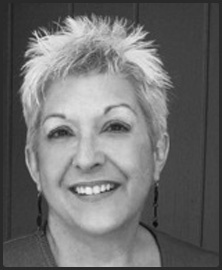In working with a designer-part one I offered some suggestions on how to begin to select a book designer. That post ended with arranging a time to talk to them on the phone to find out more. So what is it you want to find out? [No, actually, “What will it cost me to do a book with 200 pages and 50 pictures?” is not the best question to lead with. Trust me.] Try some of these questions instead:
- What kind of design do you specialize in? If the answer is “Oh, I do everything – logos, websites, business cards, menus, newsletters!” you might be dealing with someone relatively inexperienced trying to build their portfolio. Book design is a specialized subset of graphic design. [And cover design is an even more specialized subset of that. See this fabulous blog curated by Fwis for some wonderful discussions of the thinking process that goes into cover design.]
- How did you learn graphic design? There’s no right answer here. Many book designers, myself included, learned our skills outside a traditional degree program. Others, far fewer than you would expect, have undergraduate or graduate degrees specifically in graphic design; even more, I’ve discovered, have formal educational backgrounds in fine art.
- Tell me about some of your recent book projects. You want to see if the designer has done something similar to the project you have in mind. You also want to listen for how they speak about the work and the client. Are they whiney or grumbling or do they frame the inevitable rough spots in terms of challenges and learning? Is this how you would like them to speak about you?
- How can I see examples of these projects? Often a designer will have samples on their website. As your intentions become more serious, you may want to ask to see actual books so you can assess the printing and binding as well as the design. [Yeah, that’s worth a post in itself as well.] Sometimes, with privately published books, there are confidentiality agreements. That’s where references come in.
- Can you put me in touch with some of your recent clients? References are always important, whether you are engaging a book designer, a hair stylist, or a surgeon. [The questions you might ask of these references will be covered in a future post.]
- What kinds of projects are you best at? Again, “Oh, I can do everything!” is not the answer you’re listening for. Some book designers pride themselves on being able to turn a book in a very short amount of time. Some love the opportunity to set typography as fine as a medieval tapestry. Others revel in books with very elaborately laid-out pages. I bring my A-game to projects with lots of photos, lots of different informational elements that need to be organized, and a complex process that begs for strong project management.
- Tell me how a project like this would go. There’s no right or wrong answer here, but you want to have confidence that the designer has an overall workflow in place. Book projects are rarely as straightforward as they seem at the outset; you’d like to hear that the designer has some idea where the pitfalls may be and has built in reviews and checkpoints to reassess the overall project plan and make adjustments when necessary.
- What is a realistic timeline for a project like this? Experienced professional designers will be able to answer this question, usually in terms that describe the variables that can affect schedule and budget: number of review cycles, client deadlines, etc.
Okay, now you can ask:
- How do you normally price work like this? There are a number of legitimate pricing models used by professional designers. [For a good background in this, see the Graphic Artists’ Guild Pricing and Ethical Guidelines.] Some designers bill by the hour and provide a tight estimate up front. Some have a fixed price for lower-budget projects that offer a limited number of options; for higher-budget work, they would present a proposal outlining the scope and anticipated costs. [See why invest in good design for a more in-depth explanation of these pricing models.] Still others use metrics based on final number of pages, word count, number of photos, etc. Often a project will involve some combination of these factors. Whatever model they use, you want to feel comfortable discussing costs with the designer and have a clear idea of what is included in the price and what changes will require renegotiation.
There are many more questions and areas of discussion you might go into [and I’m sure to be writing about them in future posts]. The key things you should be listening for at this point is a sense of competence, professionalism and flexibility. Particularly for personal histories and other privately published books, this will become a very intimate professional relationship so you want to have confidence in the book designer you are engaging.
Related posts you might like:
working with a designer-part one
why not design the book yourself?











2 Trackbacks
[…] This post was mentioned on Twitter by cj madigan, Carole Brown. Carole Brown said: RT @cjmadigan: at long last, part two of "how to work with a book designer" http://bit.ly/1tnMe3 […]
[…] working with a designer-part two […]